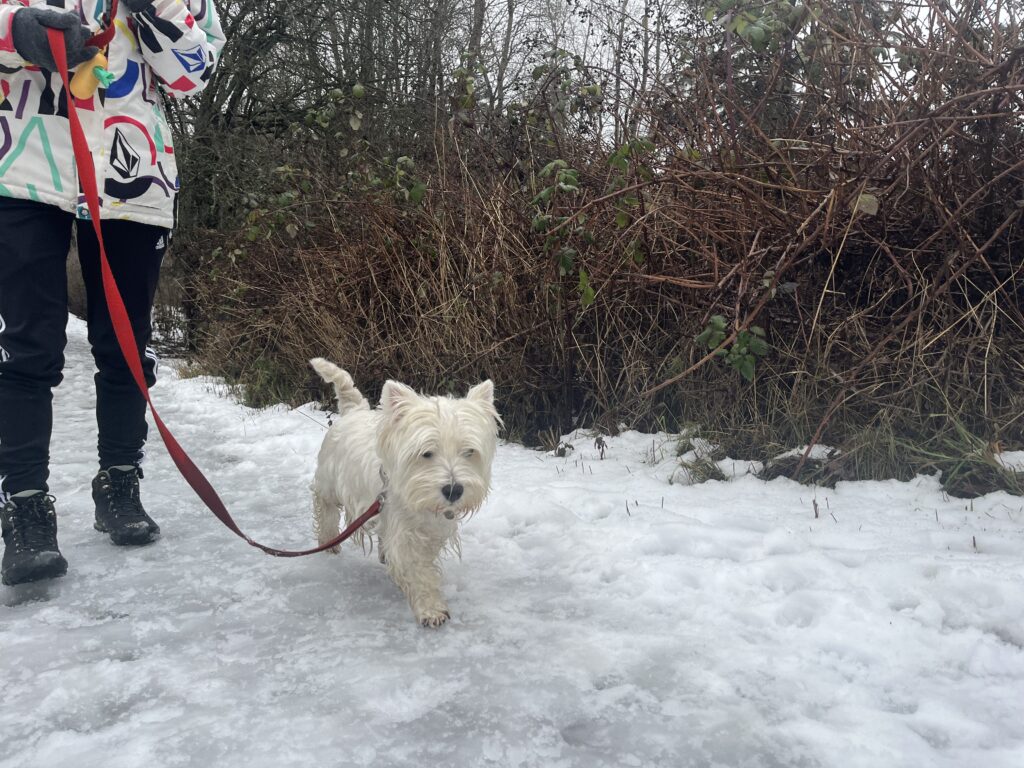Initially, my free inquiry was going to be about broadening my knowledge of countries through learning of their language, recreating foods, and investigating some of the history of their culture. While this inquiry is something I am interested in delving into, I did not know if I would have the capacity to do this weekly. Instead, I will reflect on my experiences in nature, going on a walk/run/hike and learning about the surrounding foliage. This inquiry came to fruition because of my love for being outside, feeling myself as part of nature but not at its centre. I will attempt to discover this: Does intentional connection to place make you feel more connected to it?

On January 20th, 2024, my partner Sarah (who is doing a similar inquiry in the French PDP cohort), Bonnie (our dog), and I went for a walk around Cedar Hill Park. This part encloses the Cedar Hill golf course, which I have played once before. This space is beautiful and full of native and invasive vegetation. As we traversed the snow, I began to recognize us as the invasive species in the park. it was not natural to use this huge green space as a place for only the well-off would play a round of “hit this small bole into a tiny hole for no particular reason”. For what purpose, and what meaning? What if we considered these lands beyond their current intended purpose? I want to explore these ideas about the importance of giving back land to the people, all of the people.

As we walked, there were these majestic Garry Oak trees scattered around the park. In a way, the branches reminded me of what my understanding of mycelium networks looks like underground. The Garry Oak tree, named after Nicholas Garry, is a symbol of resilience in British Columbia. These majestic trees feature twisted branches with glossy, evergreen leaves. They have played a crucial role in both indigenous ecosystems and human history, providing habitats for wildlife and cultural significance with their edible acorns. Despite urbanization threats to their habitats, conservation efforts are underway to preserve the legacy of Garry Oak trees in the natural heritage of British Columbia. It is the only oak tree native to British Columbia.

But…why? Why protect and conserve native plant species? Conserving and protecting native plant species is critical for preserving biodiversity, ecosystem health, and cultural heritage. Native plants play integral roles in their ecosystems, contributing to nutrient cycling, soil health, and supporting local wildlife. They have evolved to adapt to specific environmental conditions, promoting resilience. Preservation of native species helps prevent the displacement of indigenous flora by invasive species, maintains ecological balance, and sustains complex relationships with local pollinators. Additionally, native plants contribute to environmental sustainability, requiring fewer resources such as water, fertilizer, and pesticides compared to non-native species, thereby minimizing the ecological impact of landscaping and agriculture.
I hope to discover more of the land and my place on it in future posts. Thank you free taking the time to read!
Leave a Reply
You must be logged in to post a comment.